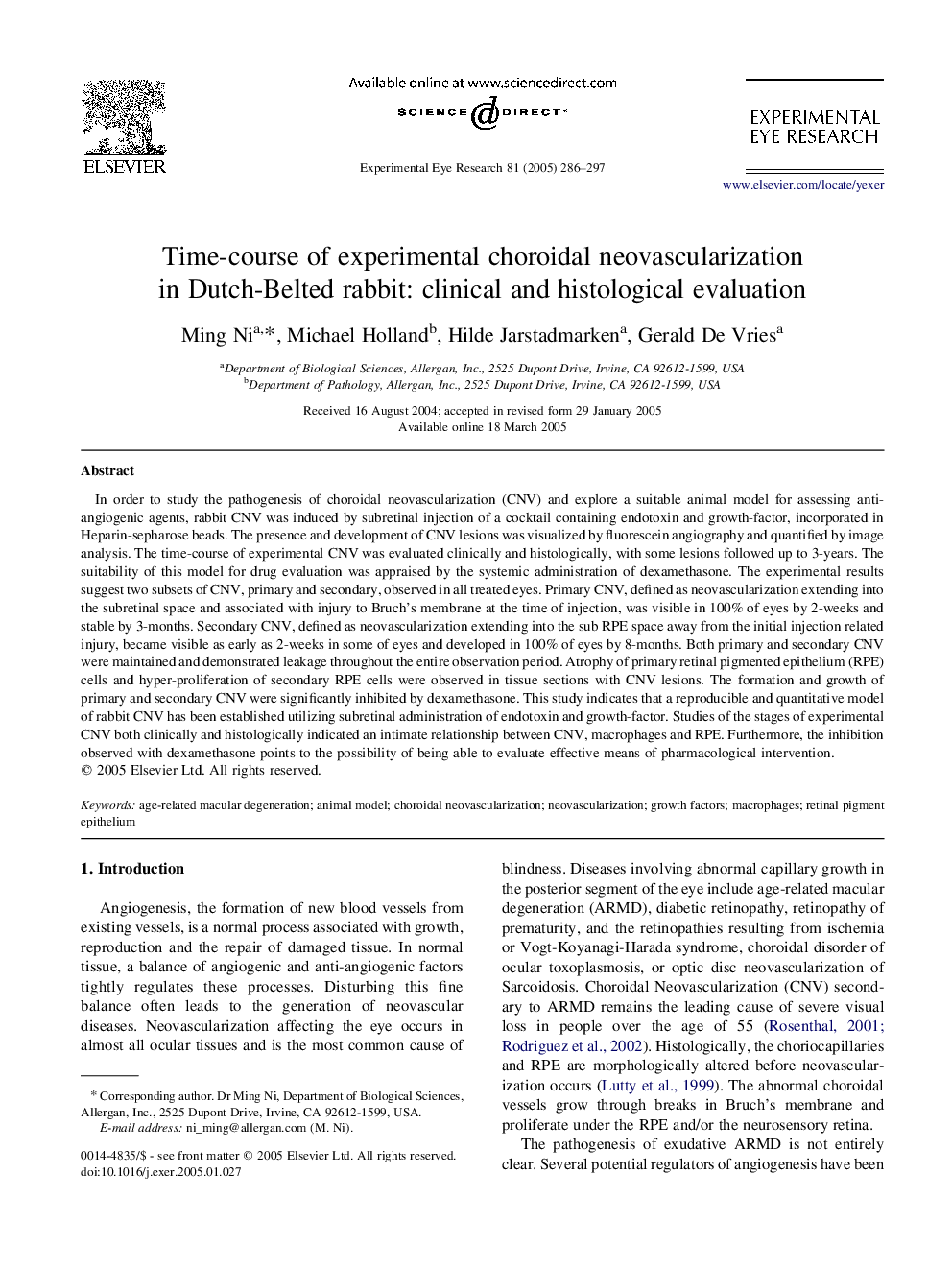| Article ID | Journal | Published Year | Pages | File Type |
|---|---|---|---|---|
| 9341425 | Experimental Eye Research | 2005 | 12 Pages |
Abstract
In order to study the pathogenesis of choroidal neovascularization (CNV) and explore a suitable animal model for assessing anti-angiogenic agents, rabbit CNV was induced by subretinal injection of a cocktail containing endotoxin and growth-factor, incorporated in Heparin-sepharose beads. The presence and development of CNV lesions was visualized by fluorescein angiography and quantified by image analysis. The time-course of experimental CNV was evaluated clinically and histologically, with some lesions followed up to 3-years. The suitability of this model for drug evaluation was appraised by the systemic administration of dexamethasone. The experimental results suggest two subsets of CNV, primary and secondary, observed in all treated eyes. Primary CNV, defined as neovascularization extending into the subretinal space and associated with injury to Bruch's membrane at the time of injection, was visible in 100% of eyes by 2-weeks and stable by 3-months. Secondary CNV, defined as neovascularization extending into the sub RPE space away from the initial injection related injury, became visible as early as 2-weeks in some of eyes and developed in 100% of eyes by 8-months. Both primary and secondary CNV were maintained and demonstrated leakage throughout the entire observation period. Atrophy of primary retinal pigmented epithelium (RPE) cells and hyper-proliferation of secondary RPE cells were observed in tissue sections with CNV lesions. The formation and growth of primary and secondary CNV were significantly inhibited by dexamethasone. This study indicates that a reproducible and quantitative model of rabbit CNV has been established utilizing subretinal administration of endotoxin and growth-factor. Studies of the stages of experimental CNV both clinically and histologically indicated an intimate relationship between CNV, macrophages and RPE. Furthermore, the inhibition observed with dexamethasone points to the possibility of being able to evaluate effective means of pharmacological intervention.
Keywords
Related Topics
Life Sciences
Immunology and Microbiology
Immunology and Microbiology (General)
Authors
Ming Ni, Michael Holland, Hilde Jarstadmarken, Gerald De Vries,
